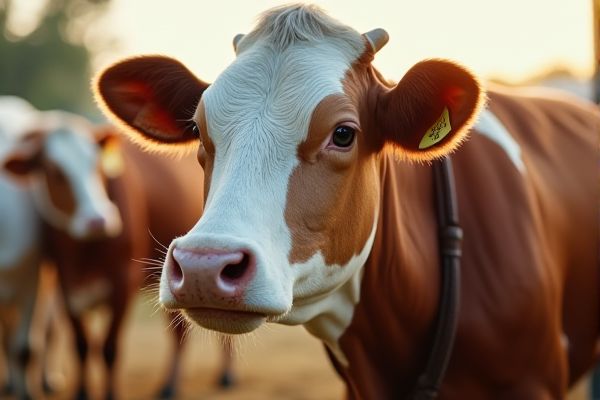
AI technology enhances precision farming in the dairy sector by monitoring cow health and optimizing feeding schedules. Smart sensors collect real-time data on milk production, identifying patterns that can lead to improved yield and quality. Predictive analytics can forecast potential health issues, allowing farmers to intervene early and reduce veterinary costs. Automation streamlines daily tasks, freeing up time for farmers to focus on strategic management and sustainability.
AI usage in dairy farming
Automated Milking Systems
Automated milking systems (AMS) in dairy farming allow for efficient milk collection, potentially increasing overall productivity. These systems can optimize the milking process by monitoring cow health and milk yield in real-time. Dairy farmers who implement AMS may experience reduced labor costs and improved animal welfare. This technology offers the chance to enhance milk quality while minimizing stress on both cows and farm workers.
Cow Health Monitoring
AI usage in dairy farming can enhance cow health monitoring by utilizing sensors and algorithms to track vital signs and behavioral patterns. For instance, systems like CowManager can provide real-time data on individual herd members, allowing for early detection of potential health issues. This proactive approach increases the likelihood of timely interventions, leading to better animal welfare and productivity. Improved health outcomes can also result in higher milk yields and better overall farm profitability.
Feed Optimization
AI implementation in dairy farming can enhance feed optimization, leading to improved milk production. Analyzing data on cow health, feed intake, and nutrient requirements can result in more efficient feeding strategies. For instance, institutions like Wageningen University have researched precision feeding techniques that utilize AI for better outcomes. This approach offers the possibility of reducing feed costs while maximizing yield and animal well-being.
Predictive Analytics for Yield
AI can enhance dairy farming by utilizing predictive analytics to forecast milk yield based on various factors such as feed quality and cow health. For instance, a dairy farm can employ machine learning models to analyze historical production data, leading to more informed decision-making. This approach increases the possibility of optimizing resources and improving overall productivity. Farmers who adopt these technologies may find significant advantages in both efficiency and profitability.
Image Recognition for Cattle Identification
AI usage in dairy farming, specifically through image recognition, allows for efficient cattle identification by analyzing physical features. Advanced algorithms can distinguish between individual cows, improving herd management and tracking health metrics. This technology enhances productivity by enabling farmers to monitor feeding patterns and breeding cycles more effectively. For instance, a dairy farm utilizing this system may see a reduction in labor costs while increasing milk production rates.
Waste Management Optimization
AI can enhance dairy farming by optimizing herd management, leading to increased milk production and improved animal health. For instance, predictive analytics can forecast milking yields based on factors like diet and climate, helping farmers make informed decisions. Waste management optimization through AI can reduce environmental impact by automating manure collection and processing, potentially resulting in cost savings. This technology offers a chance for sustainable practices that benefit both the dairy industry and broader ecological goals.
Climate Control Systems
AI usage in dairy farming can enhance productivity by optimizing feed management and monitoring animal health. Climate control systems equipped with AI can create an environment that improves milk quality and yields. The potential for reducing operational costs through efficient resource management is significant. Implementing such technology may lead to better overall farm sustainability and profitability.
Supply Chain Management
AI can optimize dairy farming by predicting milk production and improving animal health monitoring. In Supply Chain Management, it can enhance inventory control and reduce waste, thus lowering operational costs. For example, dairy companies like Dean Foods may benefit from implementing AI for efficient logistics planning. The potential for cost savings and increased productivity is significant through the integration of these technologies.
Data-Driven Breeding Decisions
Data-driven breeding decisions in dairy farming can significantly enhance the genetic potential of herds. By utilizing AI algorithms, farmers can analyze vast amounts of data on milk production, cow health, and environmental factors. This analysis facilitates more informed choices regarding breeding pairs, ultimately improving traits such as milk yield and disease resistance. For instance, institutions like the University of Wisconsin-Madison are exploring AI applications to optimize dairy genetics.
Remote Monitoring and Management Systems
AI can enhance dairy farming through remote monitoring and management systems that analyze herd health and optimize milk production. For example, systems utilizing sensors can provide real-time data on cow behavior and environmental conditions, enabling timely interventions. This technology can assist farmers in making data-driven decisions to increase efficiency and reduce costs. The potential for improved animal welfare and higher yields makes these advancements attractive in the dairy industry.
 techknowy.com
techknowy.com